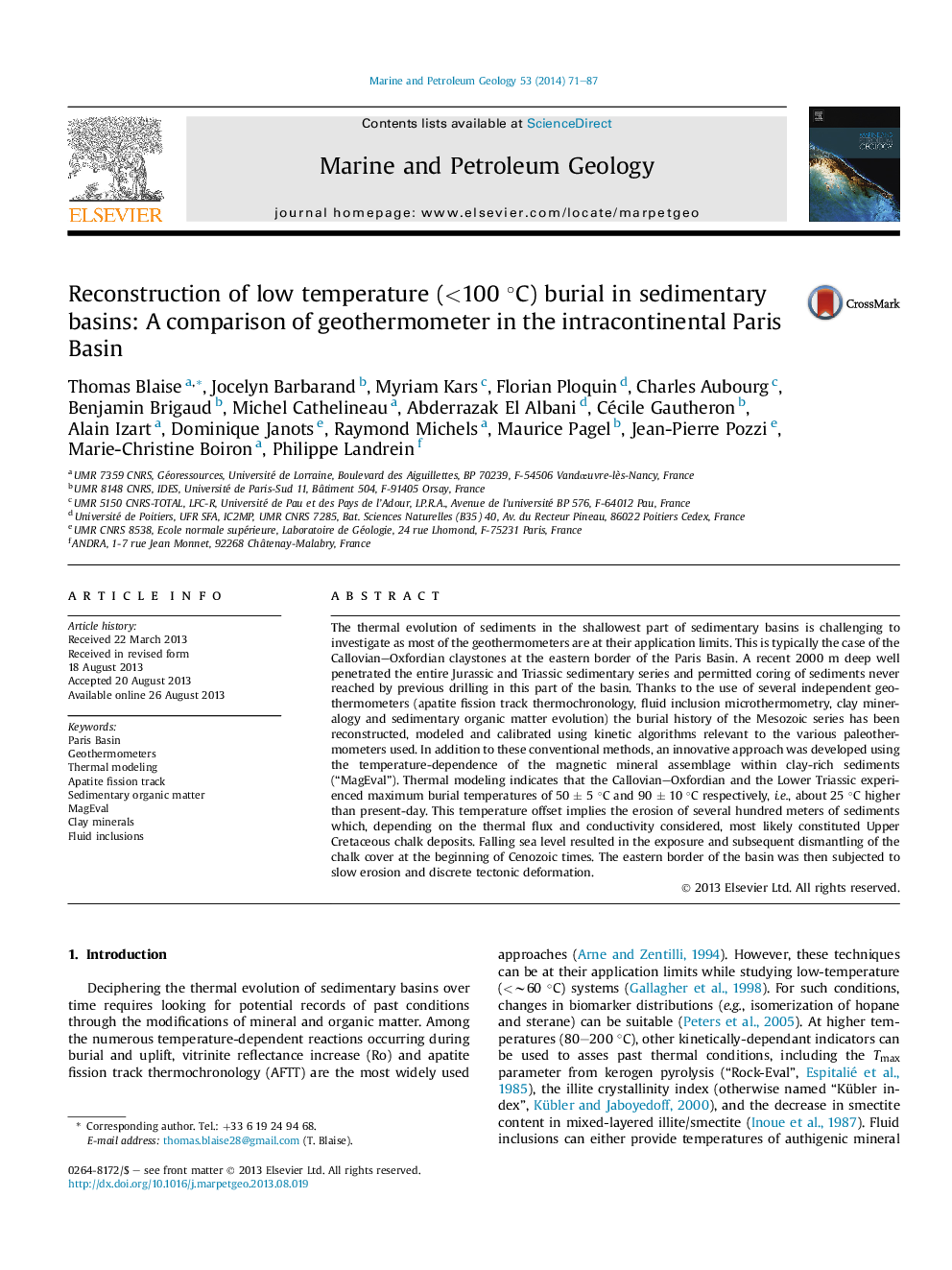| Article ID | Journal | Published Year | Pages | File Type |
|---|---|---|---|---|
| 4695657 | Marine and Petroleum Geology | 2014 | 17 Pages |
•Several thermal indicators used for low-temperature diagenesis (<100 °C).•First burial and erosional history reconstruction in the eastern Paris Basin.•Maximum burial temperatures were 25 °C higher than present-day.
The thermal evolution of sediments in the shallowest part of sedimentary basins is challenging to investigate as most of the geothermometers are at their application limits. This is typically the case of the Callovian–Oxfordian claystones at the eastern border of the Paris Basin. A recent 2000 m deep well penetrated the entire Jurassic and Triassic sedimentary series and permitted coring of sediments never reached by previous drilling in this part of the basin. Thanks to the use of several independent geothermometers (apatite fission track thermochronology, fluid inclusion microthermometry, clay mineralogy and sedimentary organic matter evolution) the burial history of the Mesozoic series has been reconstructed, modeled and calibrated using kinetic algorithms relevant to the various paleothermometers used. In addition to these conventional methods, an innovative approach was developed using the temperature-dependence of the magnetic mineral assemblage within clay-rich sediments (“MagEval”). Thermal modeling indicates that the Callovian–Oxfordian and the Lower Triassic experienced maximum burial temperatures of 50 ± 5 °C and 90 ± 10 °C respectively, i.e., about 25 °C higher than present-day. This temperature offset implies the erosion of several hundred meters of sediments which, depending on the thermal flux and conductivity considered, most likely constituted Upper Cretaceous chalk deposits. Falling sea level resulted in the exposure and subsequent dismantling of the chalk cover at the beginning of Cenozoic times. The eastern border of the basin was then subjected to slow erosion and discrete tectonic deformation.
